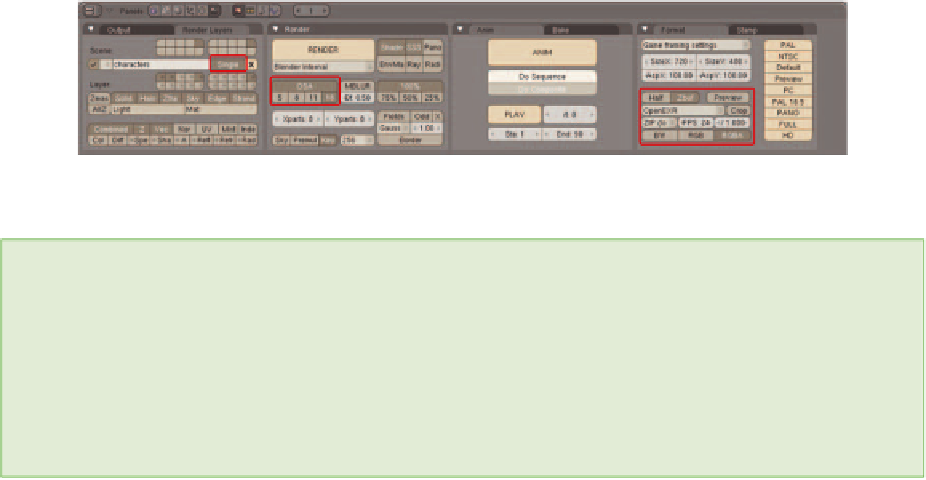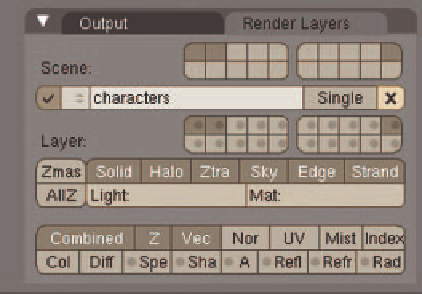Graphics Reference
In-Depth Information
OpenEXR format. No tricky compositing or other shenanigans were used. Figure 15.12 shows the screen
setup just before rendering the background image. The characters are located on Layer 1, which is disabled.
The per-shot lighting that was constructed for the characters is allowed to illuminate the set and is tweaked to
give the best render possible for the background image.
Figure 15.12
Settings for rendering the set for a background image
NOTE
Rendering a static background for your shots will only work if the camera does not move signifi -
cantly. If it does, you will need to fully render every element in the shot for every frame. Simple
camera tracking (moving side to side) with a distant background can be faked by translating the back-
ground image in the compositor with a
Translate
node. Pay attention to well done animation and
live action productions. With the exception of the “handheld” look, notice how static the camera is
in most recorded entertainment. Not only should you attempt to emulate this same style of camera
work for the sake of believability but also for the benefi t it gives you at the compositing stage.
For the fi nal production render of this shot, only the lay-
ers with the characters and lamps were enabled, as seen
in Figure 15.13. The renderer only has to prepare and
render the characters, then blend it with the background
image as indicated in the compositor. The resulting
frame is saved in OpenEXR format. If this is your fi rst
encounter with the
Render Layers
panel, you can get
an anatomy lesson in the Render Layers sidebar.
Notice that for the compositing network shown in
Figure 15.11, only one extra pass has been enabled for
the
characters
Render Layer. The
Ve c
pass, which
is short for “vector,” allows the use of vector-based
motion blur in the compositor. Many people believe, after learning the compositor basics, that one must use
all of the passes (Spec, Col, Shad, Mir, etc.) to make effective use of the feature. This is not the case. While
those separate passes can be useful in certain situations, you will fi nd that most of the time a simple
RGB
curves node applied appropriately will be quite enough to enhance and correct your imagery. Blender's com-
positor has great depth, but don't feel obliged to use every last inch of it just because it's there.
Figure 15.13
The Render Layers panel


Search WWH ::

Custom Search